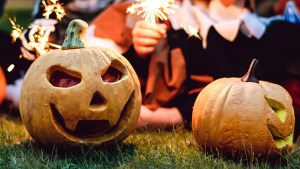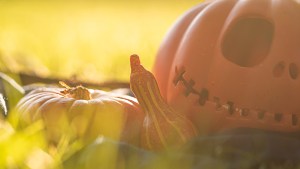It seems people are always looking for a good scare at the end of October, but these days it almost feels like the “scary” things are trying too hard. Haunted houses are good for a quick shock and a scary movie might make you jump, but for a lasting eerie feeling, one must set the proper atmosphere. To this end, every year, we turn to Camille Saint-Saëns’ “Danse Macabre.”
Dance of Death
The term Danse Macabre (Dance of Death) was coined in the Late Middle Ages to describe popular depictions of the dead, or the personification of death, summoning representatives from all walks of life to dance around a grave. The most common form of this theme was in paintings and frescoes of skeletons moving arm-in-arm with living people — typically a pope, emperor, child, king, and laborer. These images acted as mementos mori, which represent the fragility of life and illustrate that everyone was heading towards the grave, no matter what their station.
This new art spread from France to become popular throughout Europe and stimulated the people’s imagination. Soon a legend was constructed in which “Death” appears every Halloween at midnight. The specter then summons the dead to rise and dance to his fiddle until the cock crows at morning. It was from this fable that Camille Saint-Saëns found the inspiration to compose “Danse Macabre.”
The music
In 1872, Saint-Saëns wrote “Danse Macabre” as a vocal piece, but in 1874, he rearranged it to be a tone poem — an orchestrated piece that illustrates and evokes a story in sound.
The piece opens with a single note sounding 12 times, representing a bell tolling at midnight on Halloween. This is when “Death” opens the violin part with a tritone, an eerily dissonant chord that was also known as “diabolus in musica,” or “the devil’s interval.” Saint-Saëns relies heavily on this dissonance to create the spooky feeling of this piece. For a better definition of tritones, and some examples of their use in modern music, check out Beginner Guitar HQ, a wonderful free resource for those who study music.
The tune is written in 3/4 time, which makes it a waltz. It is worth noting that in the late 19th century fast-paced waltzes composed for dancing had only just been seen as respectable. This may have helped give the original listeners another layer of unease, when the dissonance of the devil’s interval melded with the style of music that had so recently been seen as scandalous.
Characterization
Saint-Saëns’ use of the xylophone represents the skeletons of the grave and signals that the dead have joined the living in their dance. The piece becomes faster, with stronger dynamics, until the rooster (oboe) sounds dawn and the dead return to their resting places for another year.
It is rare that an orchestra can elicit such imagery, but it’s easy to see why this piece became Saint-Saëns’ most popular and helped turn Halloween into the fright-fest it is today.
His good friend, piano virtuoso Franz Liszt, arranged “Danse Macabre” for the piano. If you liked Saint-Saëns’ version, then you may find Liszt’s to be a nice advancement, which maintains the chilling tone of the original while showing off a mastery of the keyboard.


